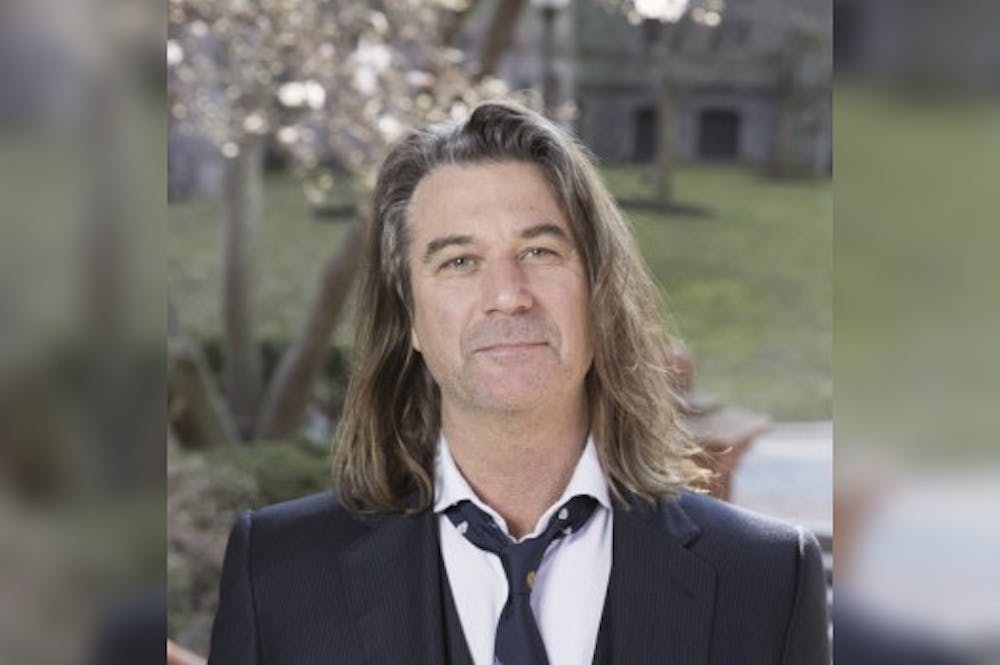
As many as one billion animals in Australia died following the series of wildfires that devastated the country in the past few months.
In January, Penn architecture professor Richard Weller led students at Sydney's University of New South Wales in designing models to transform city parks into refuges for animals whose biodiversity is threatened.
The goal of the project was for the students to design a conservation sanctuary using the layout of Sydney's Centennial Park to preserve biodiversity, Weller said. He said wildfires and rapid city expansion threaten to endanger animal species and reduce the genetic diversity of Australian wildlife.
Weller was initially commissioned by UNSW to host a two-week studio from Jan. 6 to Jan. 17 to lead students in designing animal conservation sanctuaries. The project was inspired by city expansion threatening wildlife, but became more urgent because of the danger posed by the fires, UNSW Newsroom reported.
Weller, who is a graduate of and an adjunct professor at UNSW, began his work in Sydney as a part of his Hotspot Cities Project, which aims to conserve biodiversity in Sydney, Los Angeles, and Bogota, Colombia. He said the goal of his project is to protect animals from increasing populations pushing city boundaries outwards. Weller said that the more hotspot cities grow, the more they endanger the biodiversity inhabiting those areas.
Although his project was not prompted by the wildfires in Australia, Weller said the fires and city expansion pose a similar threat to animal life and can diminish genetic diversity.
"We’re interested in anything that is happening in these biological hotspots from a design and planning perspective," Weller said. "What the fires did was rage through the territory of the hotspot on the east coast of Australia."

Weller said his project attracted heightened media attention because of the fires.
"The background to it was the hysteria of what was going on with the fires," Weller said. "The whole city was shrouded in smoke, you couldn’t see, and people were really upset about the loss of wildlife.”
Although the incubators are enclosed spaces, Weller said they differ from zoos.
The incubators "have an open condition where species can still be competitive and still relate synergistically, but scientists are working with the animals" to protect their genetic diversity, Weller said.
Some of Weller's architecture students at Penn have been contributing to the Sydney project, as well as to his additional hotspot city projects in Los Angeles and Bogota.
Weller has been teaching in the Architecture Department at Penn since 2013. He grew up in Sydney and studied landscape architecture at UNSW.
Weitzman School of Design graduate student Zuzanna Drozdz, who has worked on hotspot city research in Weller's studio at Penn, said the project is "unique and novel and exciting."
“[Weller] is a very ambitious and broad thinker," Drozdz said. "I really appreciate that he’s always really oriented toward what can be done and framing problems in ways that get people really excited."
Weller said anyone can contribute to rebuilding ecosystems, including people who are not students of design or architecture, by being sustainable consumers.
"You can make conscious choices which might affect the other end of the supply chain,” Weller said.
Weller said he is motivated by scientific findings that suggest the Earth is experiencing a manmade sixth extinction.
"It's an interesting historical moment, and I feel compelled ... to use the tools of my discipline, which is planning large scale landscapes, in a way that could help mitigate that problem," Weller said.
The Daily Pennsylvanian is an independent, student-run newspaper. Please consider making a donation to support the coverage that shapes the University. Your generosity ensures a future of strong journalism at Penn.
Donate




